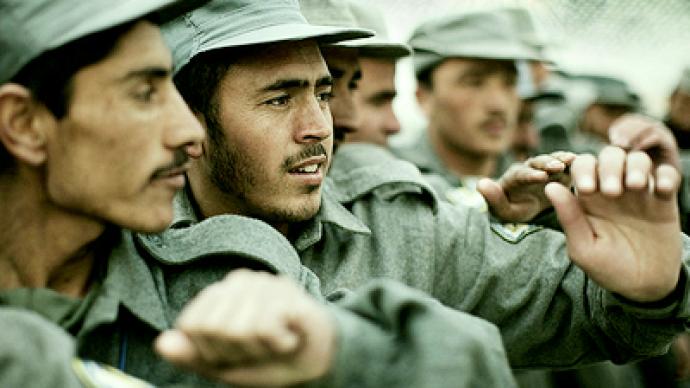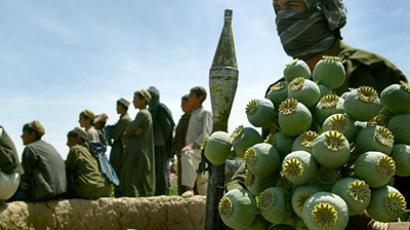Afghan militia: loyalty for dollars

The US army is training militia gangs to secure outposts in Afghanistan's most dangerous areas. For a few dollars a month, Washington hopes to keep the fighters on side, and up against the Taliban. But their loyalty may not be so easily bought.
As the southern gateway to Kabul and home to a long stretch of Afghanistan’s national highway, Wardak has been a focal point of the Taliban’s comeback in recent years. In early 2009, overstretched Afghan forces were struggling to hold them back. Military planners decided to raise a local militia to help cover the most dangerous gaps.Sayed Zakir quit a better-paying job to join because he was tired of the fighting around his village in the Jalrez Valley, nicknamed by US troops “The Valley of Death” for its deadly ambushes and fire fights.“The situation was bad here and I needed to do something for my family before it got worse,” Zakir told RT.There are hundreds militiamen like him spread across Wardak province. Now, the Afghan government and US military are about to launch dozens of new militias in hotspots around the country.The men at the outpost visited by RT were trained for three weeks by American Special Forces units, issued Kalashnikov rifles, and are paid about US $200 a month to keep watch over their own community. US commanders insist that is why they have had an impact.“They are approved by the village elders, and they work within the district they are from, which gives them not only that they understand the dynamics in the people they are working with, but they understand the community and the threat in the area,” Lieutenant Colonel Phil Chambers explained.Two years ago, the Jalrez Valley was a Taliban stronghold where US forces in armored vehicles came under fierce attack nearly every time they tried to drive through it. Today attacks are rare, and Afghan local militiamen travel freely in pick-up trucks.From the beginning, however, critics have argued that arming militias in place of government forces could create vigilante groups which are impossible to control.“Militia forces will not be loyal to the government in Kabul, to president Karzai. They will certainly be loyal to those who would be able to replace the United States in terms of financing them,” a political analyst Haroun Mir told RT.The former head of the program In Wardak, a shady ex-Taliban commander named Ghulam Muhammad, has already been replaced. Some US officials privately suspected he was playing both sides.And of the 1200 men that began the program, nearly 400 have quit, taking their weapons with them. It is believed that dozens have joined the insurgency.If the militia continues to be under-resourced, Wardak Governor Halim Fidai worries it could backfire to the Taliban’s advantage.“These forces, if they are not supported and not resourced, could be used against the government because they will join those groups that can support them,” Fidai believes.Elsewhere in Afghanistan, government-backed militias stand accused of murder, theft and rape. In the northern province of Kunduz, locals say they are worse than the Taliban.With support for the warfare flagging, the US military is looking for a quick fix so its forces can leave. But hasty decisions risk making a bad situation worse. And as more militias are raised in the year ahead, it appears there will be even more risks to manage.














